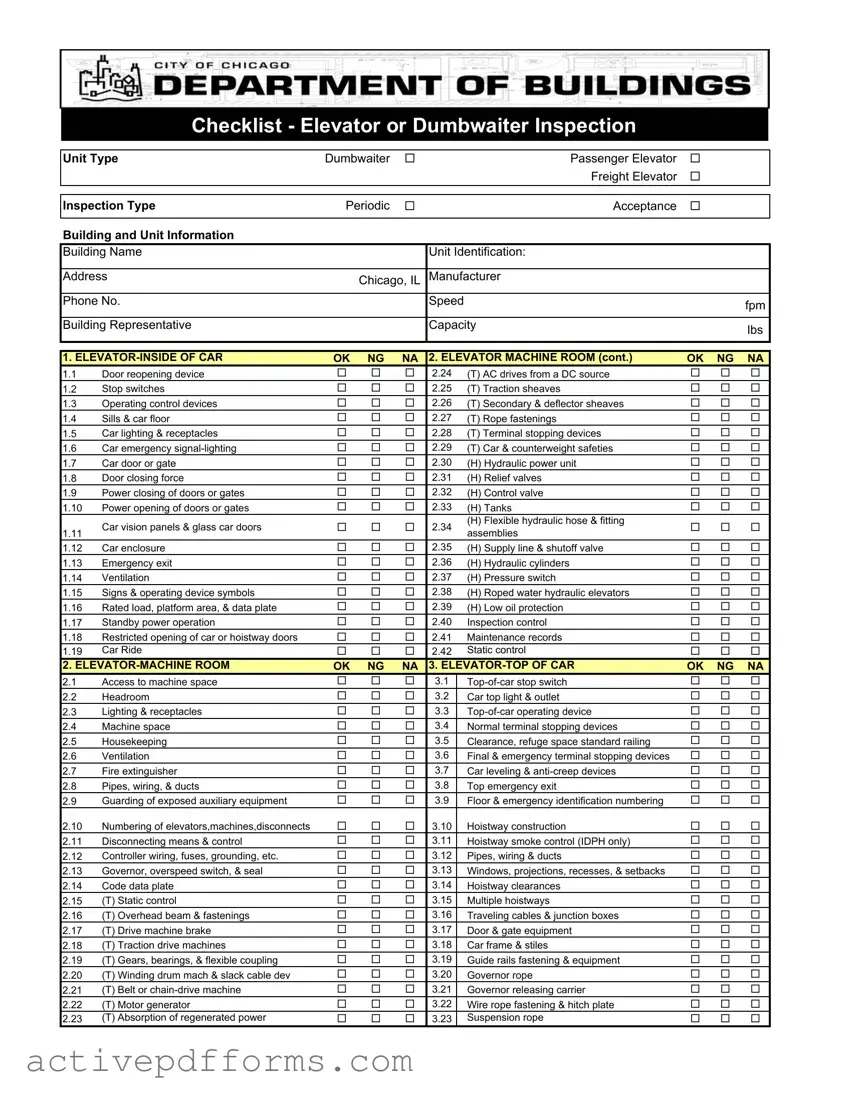When it comes to ensuring the safety and efficiency of elevators and dumbwaiters, the Elevator Inspection Checklist is a critical document. However, there are several misconceptions about this checklist that need to be addressed for clarity and compliance.
Misconception 1: The checklist is the same for all types of elevators and dumbwaiters.
This is incorrect. The checklist distinguishes between different unit types, including passenger elevators, freight elevators, and dumbwaiters, with specific inspection criteria for each.
Misconception 2: The inspection checklist is only concerned with mechanical components.
While mechanical components are a critical aspect, the checklist also covers electrical systems, safety devices, and even the cleanliness of the machine room, indicating a holistic approach to elevator inspection.
Misconception 3: If an item is marked "NA" (not applicable), it suggests that the elevator is missing a component.
In reality, "NA" simply means that the specific item on the checklist does not apply to the elevator or dumbwaiter being inspected, which could be due to its design or the type of elevator.
Misconception 4: An elevator passing the inspection implies it will function flawlessly until the next periodic inspection.
Passing an inspection indicates compliance at the time of inspection. Regular maintenance is essential to ensure continued safety and efficiency between inspections.
Misconception 5: The checklist is only useful for inspectors.
While it is a tool for inspectors, building owners, managers, and even safety officers can use the checklist as a reference to understand safety requirements and prepare for inspections.
Misconception 6: The checklist covers every possible elevator malfunction.
The checklist is comprehensive but not exhaustive. It focuses on common and critical safety aspects but cannot anticipate every unique issue or malfunction that might occur.
Misconception 7: Only items listed under "ELEVATOR-INSIDE OF CAR" are relevant to passenger safety.
While internal features are directly related to passenger safety, other components, such as machine room equipment and hoistway conditions, significantly impact overall safety and operation.
Misconception 8: The inspection is solely focused on the elevator's current state, without regard for maintenance records.
Contrary to this belief, the checklist includes a section for maintenance records, highlighting the importance of regular maintenance and its compliance with safety standards.
Misconception 9: The absence of a specific malfunction on the checklist means it's not a safety concern.
Every issue not explicitly mentioned but potentially compromising safety should be addressed. The checklist serves as a guideline, not an exhaustive list of all safety issues.
Misconception 10: Completing the checklist guarantees legal compliance in all jurisdictions.
While the checklist is a critical component of safety compliance, legal requirements can vary by location, and adherence to the checklist does not automatically ensure compliance with all local laws and regulations.
In summary, understanding the purpose, scope, and limitations of the Elevator Inspection Checklist is essential for ensuring the safety, efficiency, and regulatory compliance of elevator and dumbwaiter systems. Dispelling these misconceptions allows for a more informed and effective approach to elevator maintenance and inspection.

